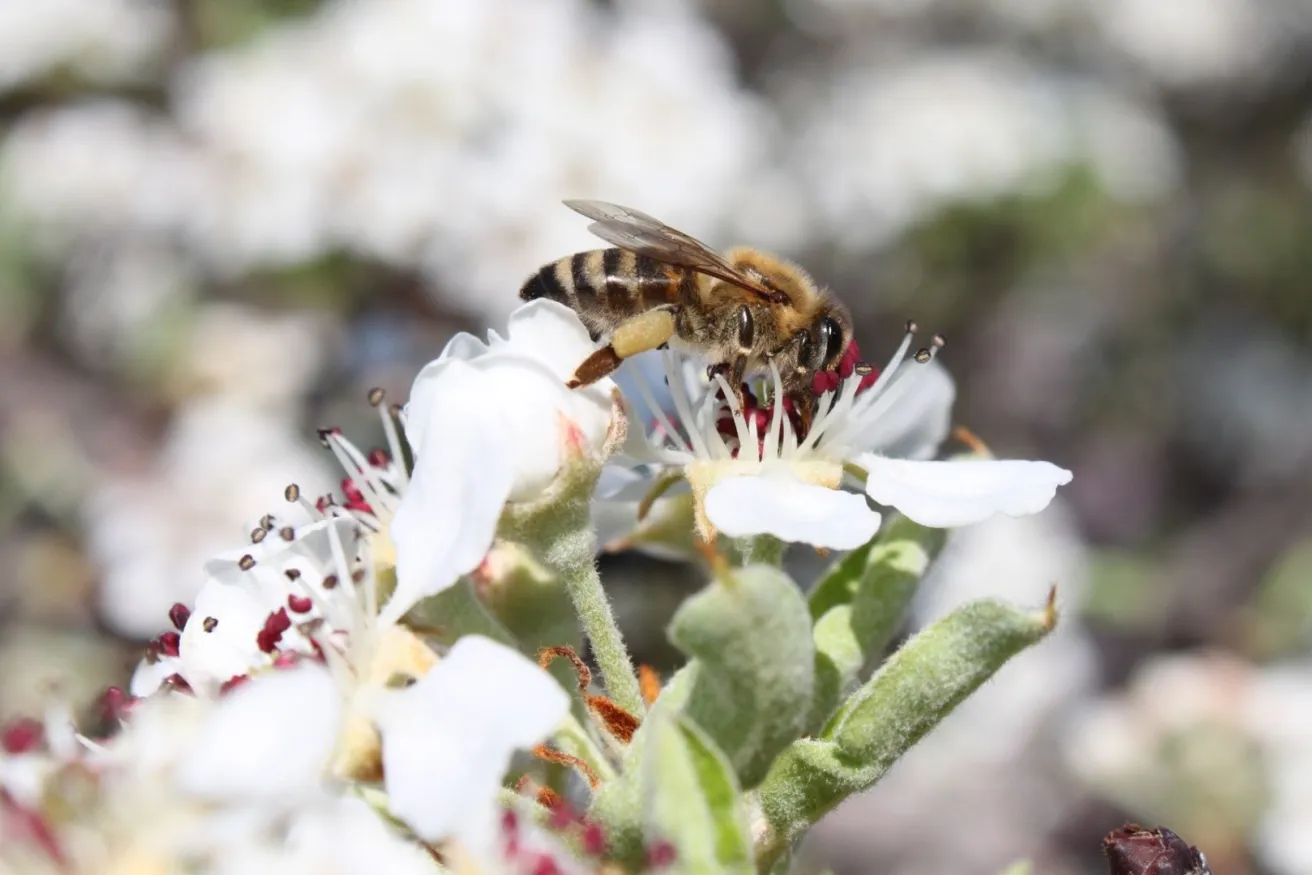Give before midnight on July 31 to double your impact where trees need us most. CHOOSE A PROJECT
Guest post by Emma Fitzpatrick of Davey Tree.
Did you know 85 percent of plants require a pollinator, and bees pollinate more than a third of our fruits and vegetables? Pollinators are an essential part of our everyday life. Without them, our gardens and grocery store’s produce sections would look shockingly sparse.
As modern landscapes change, however, bees and other pollinators are fighting to survive. The loss of open space puts pressure on our urban environments to fill the nature gap.
According to Scott Johnson, district manager of The Davey Tree Expert Company’s Nashville office, which services Williamson County, people across Tennessee are taking action.
Brighten your Landscape with a Rain Garden
“From our backyard landscapes to public space initiatives, there are many solutions to help the pollinator problem,” says Johnson. “And Tennessee seems to be leading the way.”
For example, the Tennessee Department of Transportation (TDOT) is doing its part to protect pollinators by building and maintaining habitats along the 13,807 miles of state-maintained roadways and areas near welcome centers and rest stops. The TDOT Pollinator Habitat Program will revegetate roadsides and restore land with native flowering plants, which, in turn, will help raise awareness of pollinators.
“It’s great to see people caring and creating more spaces for pollinators,” says Johnson. “While most people think first of planting flowers, trees, too, can help pollinators. Then, you get the many benefits of trees, like energy savings and curb appeal.”
Johnson says there are many trees you can add to your property that will look great, benefit you and support pollinators. Here are his top five recommendations for Tennessee landscapes.

5 Top Trees to Attract Pollinators
Sourwood: A Treat from the Bees
- Native Oaks
Planting natives is one of the best ways to assist pollinators. Native oaks, like Tennessee’s black oak, white oak, pin oak, or swamp chestnut oak, support pollinators throughout the year in many ways, but especially by providing winter shelter and healthy habitat. In fact, oaks give more than 500 pollinator species a home and enable them to return for years to come. The tree height depends on variety, but the black oak can easily grow to a height of 60’ with a spread of 60’ or larger at maturity.
- Southern Magnolia
Bees love this tree’s vibrant white to cream-colored flowers that are filled with pollen. Then, later in the spring, birds enjoy the tree’s yummy fruit. All year round, you’ll get to admire the shiny, evergreen leaves of this Southern staple. This tree can grow to a height of 80’ with a spread of up to 40’.
- Eastern Redbud
This tree’s fuchsia blooms are some of the first to blossom in spring. Bees of all kinds, including honey, bumble, and mason bees, enjoy its pollen and nectar. The rest of the year, birds and insects appreciate what this tree has to offer. Growing about 25’ tall with a 25’ spread, this tree, filled with heart-shaped leaves, will sure to be one of your (and the pollinators) favorites.
- Black Gum
A black gum tree provides colorful pops of foliage to the fall landscape. But its yellow, red and orange leaves appeal to the bee population in a completely different way. The flowers provide a source of food for bees during springtime and the bark offers a safe home. This tree can grow to 50’ tall and 30’ wide when mature.
- Tulip Tree
The large, tulip-like flowers produced by the yellow poplar give this tree its name. Not actually a poplar, this tree is actually a member of the magnolia family. Its greenish-yellow blooms and sweet nectar attract pollinators. This tree needs a lot of space, so plan for them to keep growing. At maturity, it can be 90’ tall with a spread of 40’.

Once you find the right tree to bring those buzzing, beautiful pollinators to your yard, it’s time to plant. “While it’s true that the best time to plant a tree is 20 years ago, the second best is right now,” says Johnson.
Here are Johnson’s best insights about planting trees in Tennessee:
- Location, location, location! First, pick a safe spot where your tree will have room to grow. Take the size of the tree at maturity into consideration. Make sure the tree is planted at least 15’ away, even when fully grown, from above-ground wires, underground pipes or wires, and permanent structures like your roof or garage.
- Dig, dig, dig! Due to Tennessee’s soil, you should make the planting hole 2-3 times larger than the root ball. This will allow the new tree’s roots to spread out. Then position your tree so that the area where the roots meet the trunk is at or slightly above the ground.
- Water, water, water! During the first two weeks, deeply water every day. Then, water once a week for the first year, while your tree still has its leaves. Be sure to take rainfall into account before watering.
- Mulch, mulch, mulch! Cover the planting hole with 2-3” of shredded hardwood or leaf mulch, keeping it 2-3” away from the trunk. Do not over mulch the tree or “volcano” mulch.
Once you have picked the perfect tree, keep pollinators coming back by providing proper tree maintenance. Planting a tree is an investment in your property, community and environment that will truly pay off for years to come.
About the Author
A lifelong tree hugger, Emma Fitzpatrick has spent the last five years marketing and writing about green companies. As a public relations project manager at Davey Tree, she helps get the word out about the power of trees and how to keep trees healthy for years to come.




